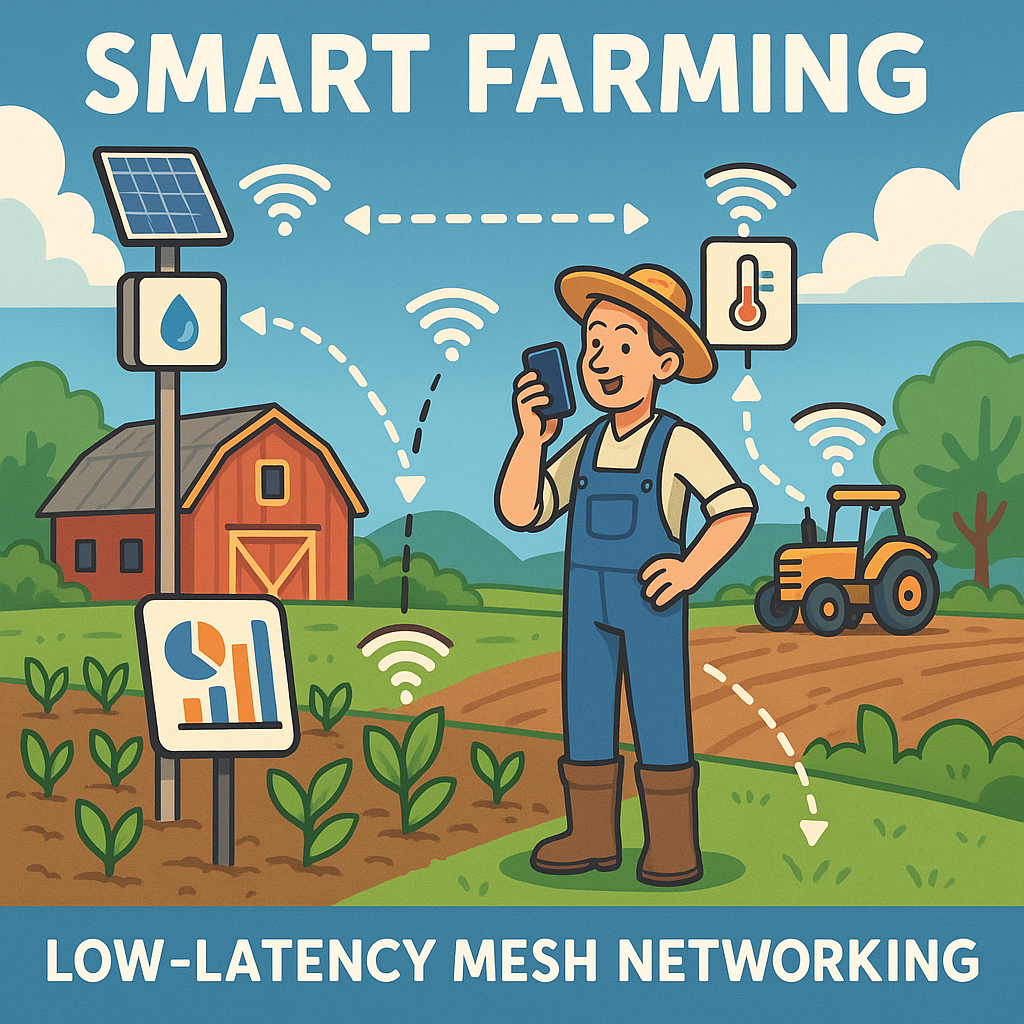Understanding Low-Latency Mesh Networking in Smart Agriculture
In the realm of precision farming, the integration of sensor arrays into low-latency mesh networking represents a significant leap towards optimizing agricultural practices. These sensor networks, designed to monitor various parameters such as soil moisture, temperature, and nutrient levels, rely heavily on the firmware that drives communication between nodes. But as we delve into optimizing this firmware, we encounter a series of challenges that require innovative solutions.
Challenges of Low-Latency Communication
One of the primary challenges in developing firmware for low-latency mesh networks is ensuring that data packets traverse the network swiftly and reliably. The latency can be affected by several factors, including the distance between nodes, the number of hops a packet must make, and the interference from surrounding electronic devices. In a typical agricultural setting, where sensors may be spread over large fields, maintaining low latency is crucial for real-time data acquisition and decision-making.
For instance, a delay in soil moisture readings could lead to over-irrigation or under-irrigation, adversely affecting crop health and yield. Thus, optimizing the firmware to prioritize fast, efficient communication paths becomes paramount. This involves careful consideration of the algorithms that govern how packets are routed through the mesh network.
Algorithmic Approaches to Packet Routing
Implementing efficient routing algorithms is pivotal. Many developers gravitate towards protocols like AODV (Ad-hoc On-Demand Distance Vector) or OLSR (Optimized Link State Routing), which are designed for dynamic networks. However, in the context of agriculture, where the environment can be unpredictable, a more tailored approach may be beneficial.
For instance, employing a hybrid algorithm that combines elements of both proactive and reactive routing can be advantageous. This means that while some information about network topology is continuously updated (proactive), packets can still be routed on-demand (reactive) when sudden changes occur, such as nodes going offline due to battery depletion or physical obstructions.
Design Trade-offs in Firmware Implementation
When developing the firmware, engineers must navigate various design trade-offs. One significant decision is the balance between power consumption and latency. In agricultural settings, sensor nodes are often battery-powered and deployed in remote areas, making energy efficiency a critical concern. While reducing the transmission power can extend battery life, it can also increase latency and degrade the reliability of the connections.
Employing sleep modes strategically can mitigate this issue. By allowing nodes to enter low-power states when not actively transmitting data, we can conserve energy without sacrificing responsiveness. For example, a node could wake periodically to check for updates or respond to requests, thereby optimizing its power usage while still maintaining a low-latency connection.
Real-World Impact of Sensor Array Optimization
The real-world implications of optimizing firmware for smart agriculture sensor arrays are profound. Farmers equipped with low-latency data from their sensor networks can make informed decisions on irrigation scheduling, pest control, and fertilization, ultimately leading to enhanced crop yields and resource efficiency. The ability to respond quickly to environmental changes can lead to significant cost savings and sustainability gains, an essential factor in modern agriculture.
Moreover, as these technologies evolve, the firmware must remain adaptable. Incorporating machine learning algorithms can enable the system to predict future environmental conditions based on historical data, further enhancing the decision-making process. This adaptability ensures that the system remains relevant in a rapidly changing agricultural landscape.
The Future of Mesh Networking in Precision Farming
As we look ahead, the optimization of low-latency mesh networking firmware will play a pivotal role in the advancement of precision farming. The interplay between hardware, firmware, and algorithms creates a complex ecosystem where every design decision can have far-reaching effects. By focusing on low-latency communication, energy efficiency, and adaptive algorithms, we can empower farmers to harness the full potential of technology in agriculture, ensuring food security for future generations.



